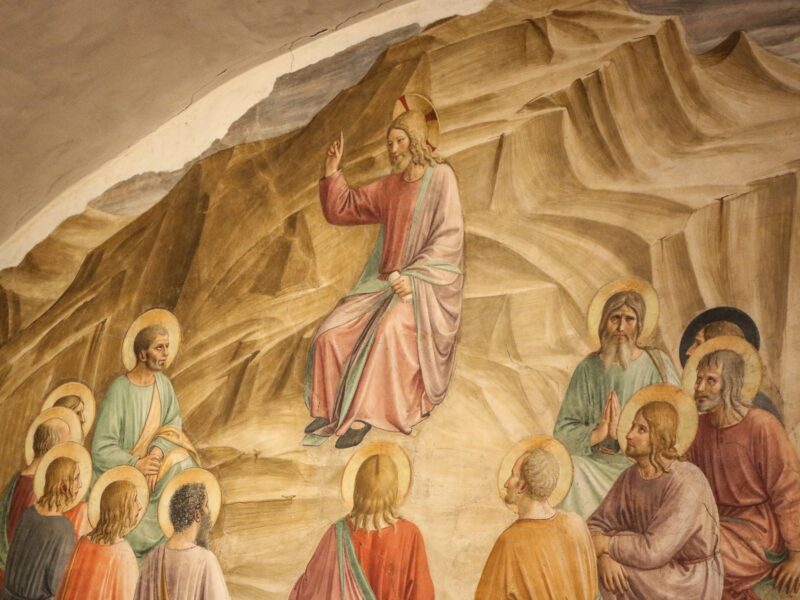
The Rose That Bare Jesu
Solemnity of Mary, Mother of God. Fr Aidan Nichols preaches on the importance of Our Lady in the mystery of our salvation.
The most popular Christmas card, among people who are in any way religious, must surely be the Mother and Child, Mary with Jesus. Today is the culmination of the Octave of Christmas, the eight day celebration of the feast that started on Christmas Eve. We keep this Octave Day as the Solemnity of Mary, Mother of God. In other words, we don’t let Christmas end without looking explicitly at the role of Mary, the indispensable part she played in the Incarnation and thus in our whole religion.
Would it be true, then, to say that today we turn away from Jesus to his Mother? Not at all, because if we look at the great artistic images of the Madonna and Child we find that the Mother points us back to her Son. Mary is contemplating Jesus, perhaps, or indicating him with her hand – as in the kind of Greek icon which is called hodegitria: literally ‘pointing the way’. In St John’s Gospel, our Lord calls himself ‘The Way’, so there is an interesting ambiguity here. Mary points the way by pointing to the way that is Jesus himself, who is our way to the Father and also our way of life. And even when Mary is not gazing directly at Jesus or pointing to him, images of the Mother and Child still show their unity which artists can underline in subtle ways, by the arrangements of limbs or clothing, in line and colour.
The natural bonding which holds together a mother and her baby gives an obvious basis to this unity of Mary and Jesus. But here the unity is more profound. Here the Child is also Mary’s Creator and her Saviour. His humanity has been assumed from the first moment of its conception by God the Word who is himself the self-expression of the Father, the Source of all. So he is his Mother’s Creator. And it is by his gracious anticipation of his own redeeming work as man that Mary, at his birth as before it, is full of grace. So he is her Saviour too.
She has been prepared for this role since the beginning of God’s involvement in the history of the human race. She represents what is best in the Jewish people, just as the Jewish people represented what was best in the religious experience of mankind. The affinity between this Mother and her Child – Emmanuel, God with us – will be, therefore, as deep as it is close, and it will lead to an extraordinary commerce between them. Between Mary and Jesus an exchange is taking place so deep that its significance is endless.
From one point of view, Christian spirituality consists in being taken up into that interchange, that relationship. We look with Mary at Jesus and with Jesus at Mary, so as to understand the union of God with humanity and, by grace, to begin to share in what it means, to begin to become saints.
This is the real meaning of the Western Church’s most widespread Marian devotion, the Rosary. In the Rosary, we look with Mary as the events of the life of her Son: events joyful, luminous, sorrowful and glorious. We salute her, but we place our greetings, our Hail Marys, between two other prayers. Before the Hail Marys comes the only prayer Jesus gave his disciples, the Our Father, and after the Hail Marys comes the doxology or ‘Glory be’ which is the Church’s outburst of praise of the divine Trinity. In the interrelations of the Mother and the Child, the Trinity reveal themselves as the true God: the Father sending her the Son and enabling her to conceive in every sense of that word by the Holy Spirit.
That is why, as the anonymous mediæval poet has it, ‘There is no rose of such virtue/ As the rose that bare Jesu./ For in that rose contained was/ Heaven and earth in little space’. It’s all found in an image which is not just for Christmas but should be permanently in our homes and work-places: Mary, Mother of God, with Jesus her Child.


